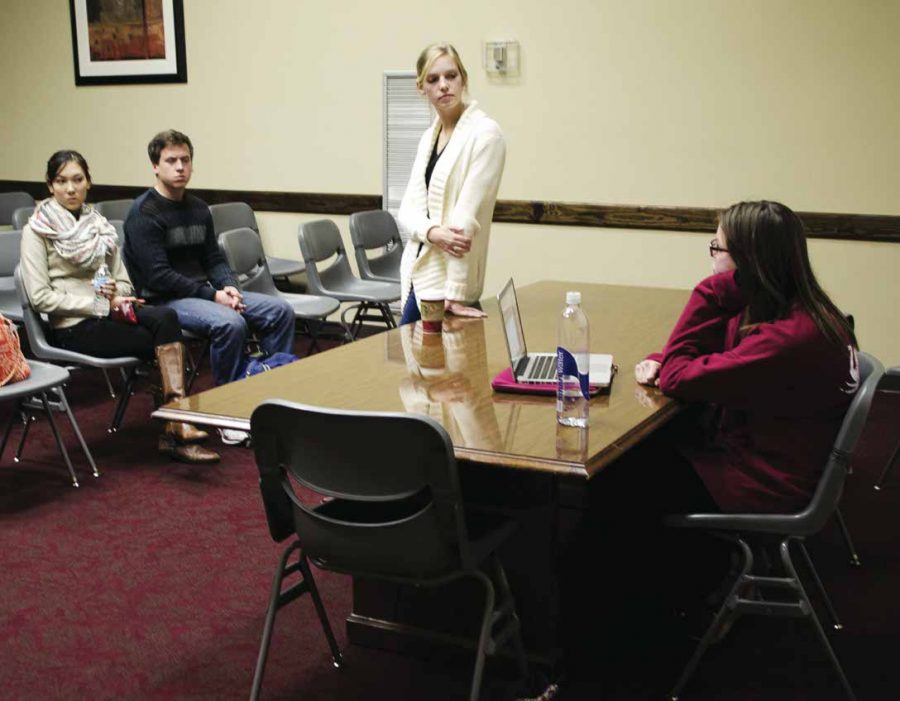At the age of 14, Ashley Roberts’ life changed when she was diagnosed with a rare and serious blood disorder.
“Right at the time where you’re like, ‘Oh, I’m a teenager,’ and you’re just kind of starting to figure out who you are, then I had this huge thing happen, and I had to go to St. Jude,” Roberts said.
Roberts, now a graduate student in rehabilitation counseling, was diagnosed with aplastic anemia, a condition in which the body fails to produce blood cells. After a couple of months at St. Jude, Roberts was able to return home but continued receiving blood and platelets every week.
“Everything I had to go through, I just made it a part of who I am,” Roberts said. “I just adjusted.”
Despite the constant tests and transfusions, Roberts was able to catch up on her schoolwork and remain in school. She graduated high school on time with honors and continued her education at Faulkner for two years.
She completed a history degree at The University of Alabama and continued onto graduate school.
“I want to stay on track with my schoolwork because it kind of lets me get away from that whole medical aspect,” Roberts said. “It’s almost like therapy.”
A few weeks ago, Roberts’ doctors found blast cells in one of her blood samples, a sign of leukemia.
Roberts said she was picking up shark teeth with her nephew when she got the call.
“I did have that feeling like, ‘Oh my god, how much more can I handle? But you know what? I’m enjoying this day,’ so I kept picking up shark teeth,” Roberts said.
Roberts said she cried the entire trip back to Tuscaloosa, but when she got home, she dried her eyes, got out of the car and moved forward.
“I’m just thankful that it wasn’t someone else in my family,” Roberts said.
Although the kind of leukemia Roberts has is particularly aggressive, her blast cell counts have remained low at 10 percent, she said.
To fight the leukemia, Roberts and her doctors are counting on a bone marrow transfusion.
Three possible donors have been found on the bone marrow registry who may be matches for Roberts. If none of them is a good enough match or in good enough condition to donate, one of her family members will donate as a half-match.
Roberts said her doctor has been having a lot of success with half-match transplants and her chances are even better because she’s not the typical aplastic anemia patient.
“Most people with aplastic anemia stay away from people and large crowds, but I never did that,” Roberts said. “I think that’s one reason why now I do so well because I never panicked and kind of started secluding myself. I really just tried to push myself.”
Still, the $1.1 million procedure will be taxing. About two weeks before the transplant, Roberts’ doctors will give her chemotherapy and kill off all her bone marrow, including the leukemia cells. After the transplant, she will have to stay at the hospital for at least 100 days.
“I know it’s going to get bad, but it will be better after that,” Roberts said.
There is an 85 percent chance the leukemia will not come back after the procedure.
Roberts said although she researched other top hospitals, she chose MD Anderson in Texas because it’s closer to home, both in location and culture.
Students inspired by Roberts’ story can sign up with the marrow registry Be The Match On Campus in January or check out bethematch.org to find another location to register.
“It’s really important for students to register because it’s the perfect age,” Erin Kennedy, president of Be The Match On Campus, said.
Doctors prefer donors between the ages 18 and 44. All it takes is a quick mouth swab to join the registry.
Roberts said there are probably students on campus every day in need of help, whether people are aware or not.
“Most people have this image of sick people in their heads as being frail, colorless, hairless, and it could be the person right next to you who needs your help, and you’d never even know it,” Roberts said.









